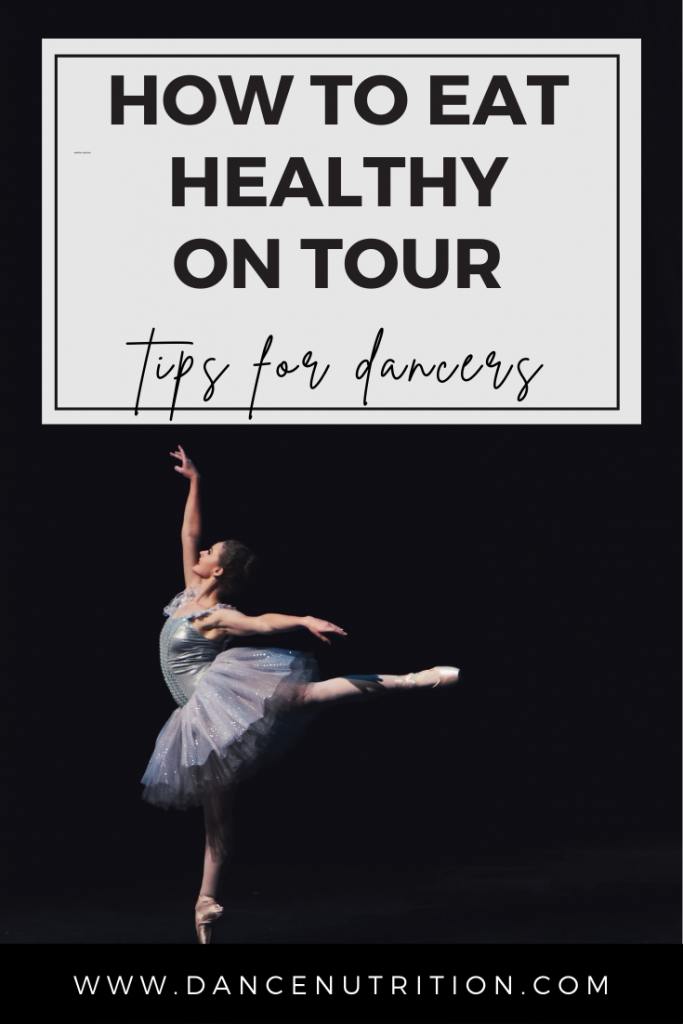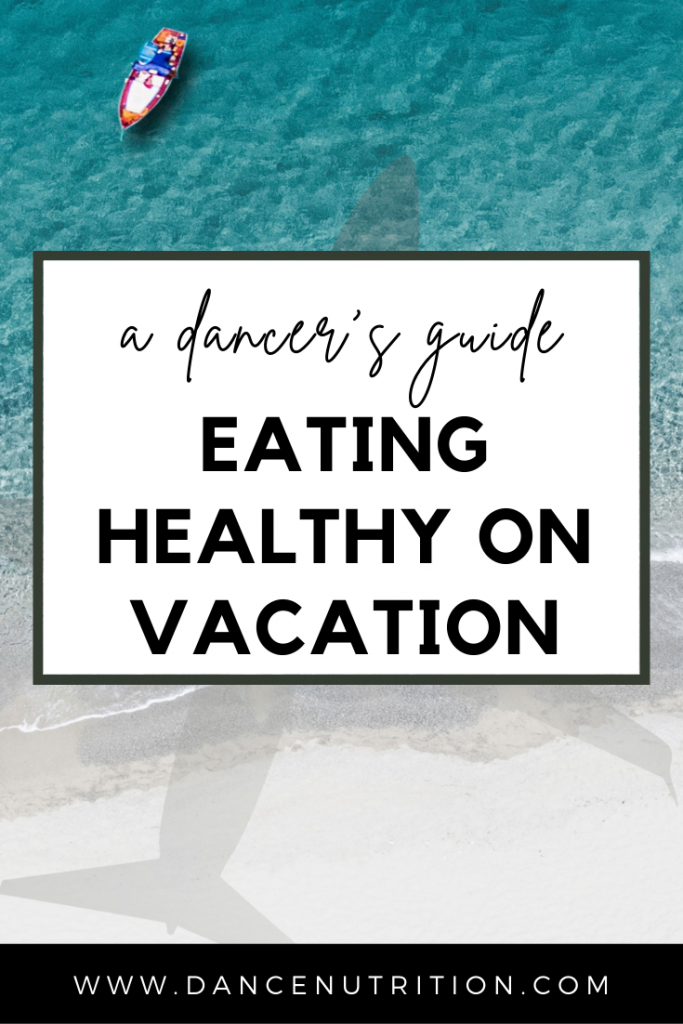Whether you’re heading on holiday, vacationing with family, or traveling on tour, staying nourished and grounded can feel surprisingly challenging, especially for dancers who rely on routine. Even for the seasoned intuitive eater, stepping away from familiar surroundings can stir up discomfort around food, movement, and self-care.
So, how can dancers support a balanced, intuitive approach to nutrition while navigating airports, hotels, long bus rides, or even language barriers? Let’s explore how dancers can stay fueled and feel good while traveling without stress, guilt, or a suitcase full of protein bars.
Why Travel Can Challenge a Dancer’s Relationship with Food
Even with consistent progress in intuitive eating, travel can trigger a sense of uncertainty. Here’s why:
- A New Environment Disrupts Routine: You’re navigating a completely different rhythm with new foods, new meal times, and new schedules. That disruption can make it harder to hear (or trust) your body’s cues.
- The Scarcity Mindset Kicks In: When exposed to unique foods you don’t usually have access to, it’s easy to fall into an all-or-nothing mindset. “I’ll never get this again—better eat as much as I can now!” While excitement around new experiences is valid, this mindset can override internal signals of fullness and satisfaction.
- Irregular Schedules Lead to Missed Meals: Between flights, performances, sightseeing, or studio rehearsals, long stretches without food can lead to extreme hunger and reactive eating.
- Language Barriers Can Limit Choices: In unfamiliar countries, decoding a menu, especially if you have food preferences or allergies, can feel overwhelming, potentially leading to decision fatigue or food avoidance.
5 Practical Tips for Eating Well While Traveling as a Dancer
Let’s shift the focus from perfect eating to supportive eating. The Healthy Dancer® prioritizes nourishment to feel energized, satisfied, and empowered to enjoy your trip. Whether you’re on tour or vacation, these strategies will help you stay grounded in your body’s needs.
#1: Reevaluate Your Priorities
Depending on why you’re traveling, you can reevaluate the role food plays for some or all of your trip. Ask yourself: What’s the purpose of this trip? If it’s a relaxing vacation, there’s more room to follow your body’s natural cues. You may not need a detailed food plan, but just the space to check in with hunger and fullness throughout the day.
If you’re on tour or balancing performance with travel, then proactive planning becomes more important. You’ll need to ensure you’re eating enough before hunger becomes urgent. This will support energy and stamina. Intuitive eating doesn’t mean eating only when hungry. It means listening to your body and respecting your context.
#2: Bring Easy, Packable, Nourishing Snacks
Having snacks on hand gives you a buffer against unpredictable mealtimes and food availability. This helps keep blood sugar stable and prevents the “hangry” spiral, especially important for dancers on tour who are balancing rehearsals with sightseeing.
Here are some dancer-friendly travel snacks that are non-perishable and easy to pack:
- Fresh fruit (apples, bananas, oranges)
- Mixed nuts and seeds
- Granola or trail mix
- Dried fruit (mango, apricots, raisins)
- Nut butter packets
- Whole grain crackers or pretzels
- Instant oatmeal (just add hot water)
- Shelf-stable milk or powdered milk
- Protein powder or nutrition shakes
- Cereal or granola bars
Pro tip: Grab extras from the hotel breakfast bar. Pack a banana, a mini cereal box, or a sealed yogurt if you have access to refrigeration.
#3: Prioritize Satisfaction
When you’re away from home, food is part of the experience. That means you’ll likely eat foods that feel more indulgent, and that’s okay. Satisfaction is a crucial part of nourishment.
Rather than focusing on “clean” or “healthy” eating, focus on how a food makes you feel: does it give you energy, joy, or connection? These are valid reasons to eat, even if the food isn’t kale. Check out this article to learn more about satisfaction, aka the fourth macronutrient.
#4: Practice Mindful Eating
You can enjoy new foods and stay connected to how your body feels while eating them. Vacation isn’t a free-for-all, and it’s also not a time for guilt. Mindful eating techniques can help you savor each bite and stop before discomfort sets in.
Try this:
- Check in before eating: Are you hungry, bored, curious, emotional?
- Eat without distractions (when possible): Notice texture, flavor, and aroma.
- Pause halfway through your meal to see how full you feel.
Mindfulness doesn’t mean perfection. It’s a gentle nudge toward awareness, not a rigid rule. You can start with unconditional permission (a topic I’ve previously discussed).
#5: Respond with Compassionate Curiosity
If you find yourself eating more than usual, or feeling uncomfortably full, pause and ask: What’s going on here? Travel can stir emotions like excitement, nostalgia, homesickness, and even fear of missing out. Sometimes, those emotions manifest in food. That’s normal.
Rather than criticizing yourself, get curious. Did that food feel emotionally significant? Was it tied to a special memory? Were you simply trying to make the most of a short experience?
If you feel like you’re overeating due to scarcity, consider how you can bring the experience home. Snap a photo of your favorite dish or menu item. Research how to recreate it in your kitchen. This bridges the gap between a “one-time indulgence” and a sustainable food joy practice.
Key Takeaways: Your Body Travels With You
The most important thing to remember is this: food is just one part of the journey. What’s more important than eating “perfectly” is feeling supported, energized, and connected to your body. That means fueling consistently, honoring hunger, respecting fullness, and enjoying the flavors and memories that food can bring.
And when things don’t go as planned? Bring in self-compassion. Your dancer body is incredibly adaptive and resilient. It knows how to bounce back.
Further Reading for Dancers on the Go:
- The Fourth Macronutrient: Why Satisfaction Matters
- How to Practice Gentle Nutrition
- What Is Taste Hunger and Why Does It Matter?




